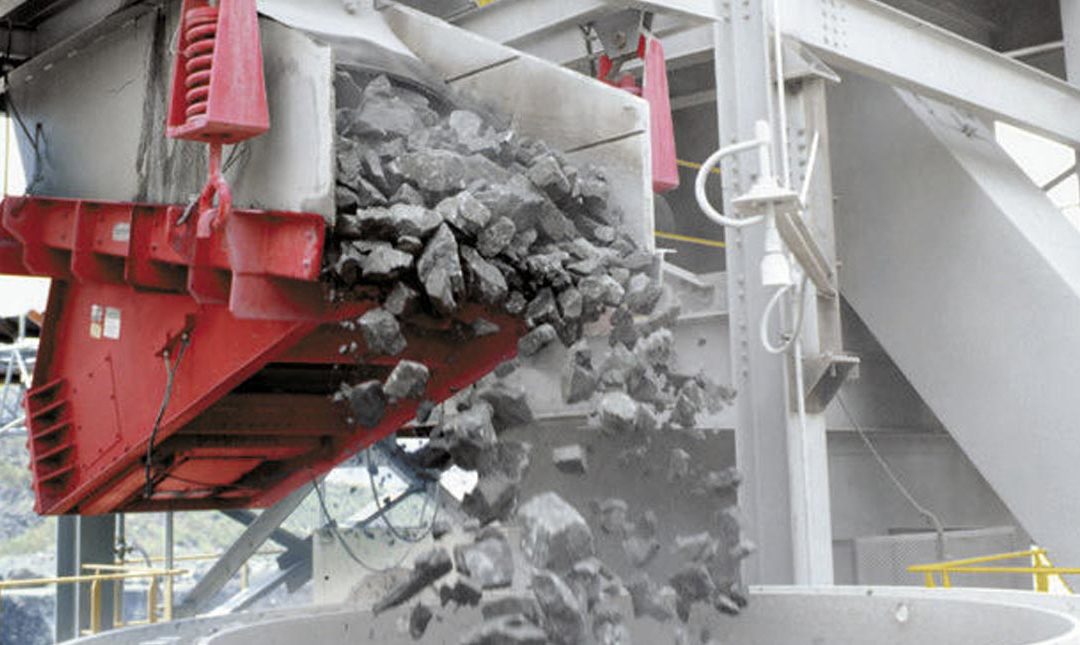A vibratory feeder is an instrument that uses vibration to “feed” material to a process or machine. Vibratory feeders use both vibration and gravity to manoeuvre material. Gravity is employed to work out the direction, either down, or down and to a side, then vibration is employed to manoeuvre the fabric. they’re mainly wont to transport an outsized number of smaller objects. during this vibrating feeder, a number of similar products are also there as Belt weigher are used only to live the fabric rate but weigh feeder can measure the flow material and also control or regulate the rate by varying the belt conveyor speed.
The Vibrating Feeder consists of a tray manufactured from low-carbon steel and a body housing the electromagnet. The tray which is connected to the armature of the magnet vibrates because the magnet gets energized. The vibration sets the fabric in motion. Controlling vibration gives the controlled flow of the fabric. The body housing the electromagnet is formed in a totally enclosed design to forestall dusting. Useful to any continuous process industry where the automatically controlled flow of the fabric is required.
DPH Engineering is a certified Distribution & Suppliers of Vibrating Feeder & also an all other Material Handling Equipment. Vibrating feeders are very useful in plastics, rubber, food, pharmaceutical, chemical, fertilizer, glass, and other allied industries. the vibratory feeder may be supplied either in floor mounted or suspension mounted design. Vibrating Feeder are suitable for conveying and dosing the bulk of bulk material. Vibratory feeders are capable of conveying a good range of particle sizes. Designed to be robust, either of an open or enclosed trough design. The trough-shaped structure are particularly suitable conveyors in extreme environmental conditions, thanks to the straightforward cleaning ability, but also suitable within the chemical and food industry.
Advantages & benefits of vibrating feeders
Wide range of applications:
● using magnetic vibrator drive(s) or an electromechanical vibrator(s)
● dust-proof versions available (enclosed)
● long conveying possible using multiple connected vibratory feeders
● multiple drives possible
● manufactured in mild steel or stainless steel
Construction
● a feeder with drive traverse
● in-/outlet pipe (covered variants)
● elastic support elements
● flexible seals
Types of vibrating feeders
There are several different types of vibrating feeders, including:
● Vibratory Bowl Feeders
● Rotary Feeder
● Linear Feeders
● Electromagnetic Vibratory Feeders
In bulk material handling, vibratory feeders are accustomed to convey material from one piece of kit to the subsequent. they’re able to separate and convey materials using precise vibrations. Their most typical functions include: feeding, sorting and sifting. Users address vibratory feeders once they want to manoeuvre delicate or sticky materials without damaging or liquefying them. Such materials include gravel, sand, crushed cement, wood, metals, and plastic. Vibratory feeders are popular to be used in an exceedingly wide range of industries, including agriculture, fertilization, recycling, food processing, mining, pulp and paper, sand and gravel and pharmaceuticals.
Vibratory feeders will be supplied from a few grams to 100 tons per hour capacity or more. They can also handle slightly wet material. Vibratory feeders will be used for screening by fixing a screen over the tray. These screens are very successful for screening free-flowing material, because the use of moving parts, eccentrics, etc. are completely eliminated during this equipment. The vibratory feeders tabled below, operate at 230 Volts A.C. single-phase system. the larger size feeders beyond 100 T.P.H. operate at 440 Volts A.C. single phase. Every kind of vibratory feeder works a touch bit differently. They all, however, feed material into another machine or process via a combination of gravity and vibrations

